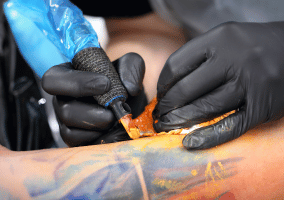Tattoos have become a popular form of self-expression and artistry for many individuals. However, the process of getting a tattoo can be painful and uncomfortable, leading some people to seek out ways to minimize the discomfort. One common solution that many tattoo enthusiasts turn to is using lidocaine cream to help numb the skin before getting inked. But does lidocaine cream actually work for tattoos? Let’s explore the effectiveness of this popular option for pain relief during the tattooing process.
Importance of Using Lidocaine Cream for Tattoos
For many people, getting a tattoo is a significant and meaningful experience. However, the pain associated with the process can be a barrier for some individuals. Lidocaine cream offers a potential solution by providing temporary numbing effects that can help alleviate some of the discomfort associated with getting a tattoo. Understanding how lidocaine cream works and its effectiveness in the tattooing process can help individuals make informed decisions about managing pain during their tattoo appointments.
How Does Lidocaine Cream Work for Tattoos?
Lidocaine is a local anesthetic that works by blocking nerve signals in the body. When applied to the skin, lidocaine cream temporarily numbs the area, reducing the sensation of pain. This can be especially helpful for individuals who have low pain tolerance or who are getting tattooed in sensitive areas.
- Apply a thin layer of lidocaine cream to the skin at least 30 minutes before your tattoo appointment.
- Cover the cream with plastic wrap to ensure it stays in place and is fully absorbed into the skin.
- Wait for the numbing effects to take hold before starting the tattooing process.
Practical Tips for Using Lidocaine Cream
When using lidocaine cream for tattoos, it’s important to follow some key tips to maximize its effectiveness:
- Choose a high-quality lidocaine cream recommended by your tattoo artist or a healthcare professional.
- Avoid applying lidocaine cream to broken or irritated skin, as this can increase the risk of side effects.
- Discuss your use of lidocaine cream with your tattoo artist to ensure they are aware of any potential interactions with tattoo ink or the tattooing process.
Pros and Cons of Using Lidocaine Cream
While lidocaine cream can be a helpful tool for managing pain during the tattooing process, it’s important to consider the pros and cons:
- Pros:
- Provides temporary numbing effects
- Can help individuals with low pain tolerance
- Cons:
- May cause skin irritation or allergic reactions in some individuals
- Could potentially affect the tattooing process or ink absorption
Conclusion
Using lidocaine cream for tattoos can be a helpful tool for managing pain during the tattooing process. By understanding how lidocaine cream works, following practical tips for use, and considering the pros and cons, individuals can make informed decisions about incorporating this numbing option into their tattoo experience. Whether you’re a seasoned tattoo enthusiast or getting inked for the first time, exploring the benefits of lidocaine cream can help make your tattoo appointment more comfortable and enjoyable.












